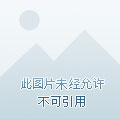With the increase of the group of smartphone users, the presentation of mobile UI design has become more and more diverse, but it is still at the level of meeting the functional needs of users. It mainly learns and draws on Western design styles and elements, and is uniformly presented as a flat minimalist style, lacking deep cultural connotation and unable to meet the needs of users' psychological level.

Mainland traditional patterns have a mature visual system and conventional cultural meaning, which can achieve the effect of cross-cultural language dissemination, and have strong reference significance for modern UI design. The existing mobile phone UI works on the market for the application of traditional Chinese patterns stay on the surface, and excellent cases of mobile UI fusion of traditional pattern elements are relatively rare.
The application method of traditional Chinese patterns in mobile phone UI design is based on the basic principles that traditional Chinese patterns need to follow in the application of mobile phone UI design, combined with the basic characteristics of mobile phone UI, the author proposes the application method of traditional Chinese patterns in mobile phone UI design from the following three aspects.
(1) Deconstructing and reorganizing traditional Chinese patterns pay attention to complexity and change rather than simple repetition and listing, for example, blue and white patterns make extensive use of symmetry and stacking design techniques, which seem complex but actually contain unique rhythms and rhythms. This also leads to the visual effect of traditional Chinese patterns is too complicated and does not conform to the simple aesthetic habits of modern people, and the direct application will cause users to be tired of reading due to lack of intuitiveness. Therefore, the first step is to analyze and interpret the basic forms of traditional Chinese patterns, such as the overall composition, color composition, arrangement rules, use of scenes and other elements, through deconstruction to extract the most representative characteristics of each pattern.
For example, the ring strip pattern used in bronze decoration, its form such as "the undulation of the mountain, the clouds around it", often uses the two-party continuous decoration technique to carve in the abdomen of the utensil, deconstructing its form can get different elements such as mountains, clouds, waves and the continuous organization method of the two parties, on this basis, a new arrangement and combination can be deduced. For example, in the ancient totem era, the dragon was worshipped as an ancestral god by the Chinese ancestors, and the image of the dragon was cleverly reconstructed after decomposing and decomposing a variety of animals such as pythons, antlers, bull heads, fish scales, and eagle claws.
(2) Exaggerated and simplified mobile PHONE UI has the characteristics of consistency, intuitiveness and convenience, which require the mobile PHONE UI to abandon all complex and difficult elements to reduce the learning cost of mobile phone users. Therefore, on the basis of deconstructing and restructuring the pattern, it is necessary to simplify and summarize the complex pattern, highlight the characteristics of the pattern and omit the secondary cumbersome parts and details, make the pattern more simple and generous and simple, and at the same time lose the spirit and beauty of the original pattern.
For example, in the Ming and Qing dynasty complement patterns, the elements of cranes, pine trees, waves, and red suns are very specific, and we can decompose and reorganize these elements, use the abstract technique of geometric lines to simplify these images, and then use exaggerated imagination methods to highlight the most representative crane elements of the pattern. Through exaggerated and simplified design techniques, the traditional pattern is closer to the modern way of expression without losing its original characteristics.
(3) The integration and unification of the mobile phone UI contains a variety of factors such as icons, interfaces, unlocks, and text, and the switching between each factor determines that it is a systematic, holistic, and comprehensive design. One of the principles of mobile UI design is to maintain the integrity and consistency of the interface effect, so in the integration of traditional Chinese patterns, it is necessary to consider the overall effect of software operation, rather than just adding pattern elements in a certain aspect.
Mobile phone UI and Chinese traditional patterns are both local and overall interaction, in the process of re-creation should give play to the characteristics of the strong adaptability of the traditional Chinese pattern form, by controlling the overall and local tone, shape, elements, styles, strengthen the connection between the various parts of the mobile phone UI to achieve the unity of the overall design effect.